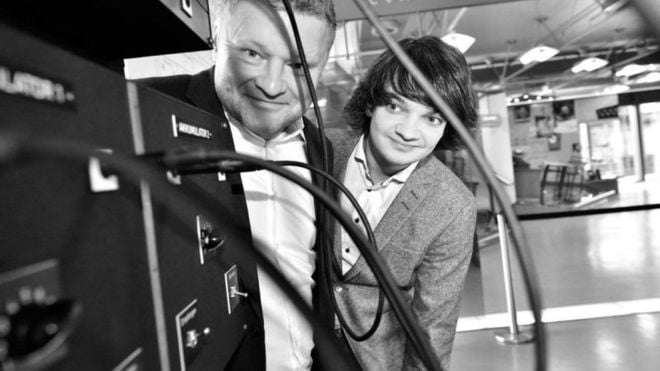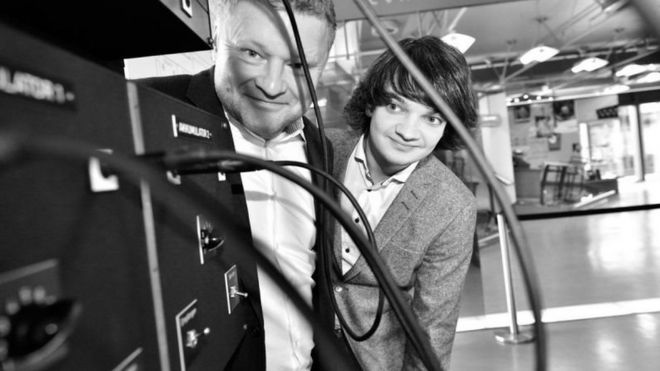

An exhibit that demonstrates what it was like to programme one of the first computers has won an award for the best computer conservation project.
The award-winning interactive project recreates part of Eniac – the Electronic Numerical Integrator and Computer.
The massive machine built from 18,000 valves and 1,500 relays first ran a program in February 1946.
The exhibit was created at the Heinz Nixdorf Museum Forum (HNF) in Germany.
State secret
The award was set up in 2012 to honour the memory of Tony Sale, a British pioneer of computer conservation who spent 15 years recreating the early Colossus computer.
The 2016 winner was created by Dr Jochen Viehoff and Johannes Blobel for the HNF and is built of a simplified model of one small component of Eniac known as the accumulator. The original Eniac filled several rooms and weighed about 27 tonnes.
The exhibit uses two accumulators, cables, relays and flashing lights to show how complicated it was to perform simple calculations on the early computer.
Eniac was the second general-purpose electronic computer created in the 1940s and won wide acclaim because the machine that was first, called Colossus, remained a state secret until the 1970s.
Prof Martin Campbell-Kelly from the University of Warwick, who headed the award’s panel of judges, said the exhibit “captured the essence” of the Eniac.
“The panel was particularly impressed at the thought and planning that went into making the reconstruction accessible to non-specialist audiences,” he said.
Visitors to the HNF would be “captivated” by the exhibit, he said.
Previous winners include a virtual reconstruction of the German Z1 computer and a museum exhibit that explored the history of IBM’s influential 1401 machine.
[Source:-BBC]
